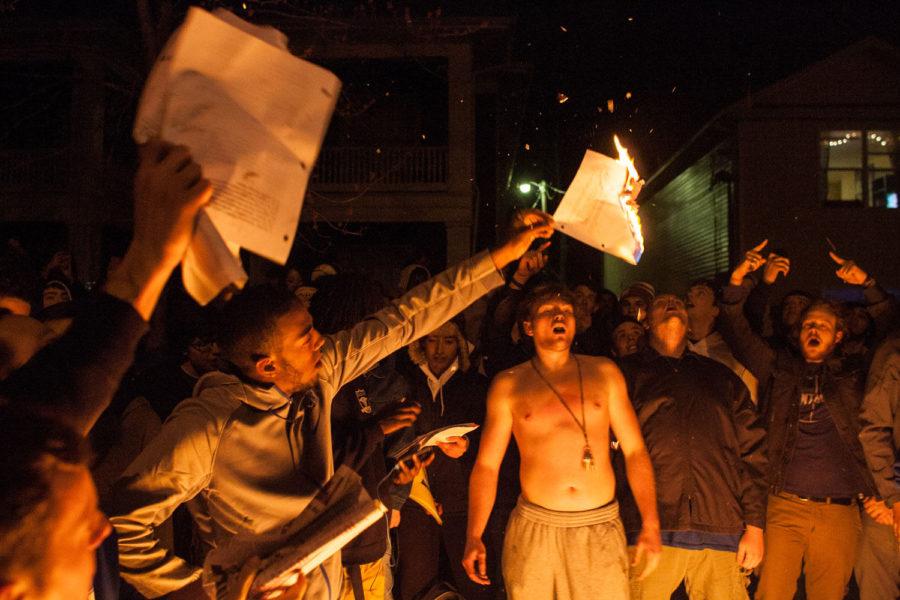Editorial: Media misrepresents UK
April 8, 2015
The Kentucky Kernel learned on Monday that of the 69 arrests made in the campus area after NCAA tournament games this year, only seven were UK students.
While the numbers reinforce our own beliefs about the character and uprightness of the average UK student, the realization was too late for national media sources, many of which used UK’s presence in the tournament to misrepresent UK students as aggressive, even violent rioters.
Let us make one thing clear: this year’s State Street was controlled. Lexington Police watched the scene and intervened whenever people engaged in dangerous behavior.
Police arrested people who burned material and swung it toward the crowd or into the air, or those who fist-fought during the three hours on Saturday night before the police cleared the street at about 2 a.m.
In 2014, Lexington police and fire reported 21 arrests and 35 injuries after the Final Four game during the celebrations.
On Sunday morning, the mayor’s office reported only three hospital transports.
UKPD Chief Joe Monroe reported 42 total arrests the night of the 2015 loss, only two of which were of students.
This is a reality that was not reflected in web stories by larger publications or on their social media accounts, as news sources failed to properly characterize the crowd of UK supporters as people from a multitude of locations and schools who travel to State Street to participate in the post-game celebrations.
Whether their mistakes were from laziness or from lack of knowledge is unclear. But the result is that UK students looked undeservingly bad to the U.S. at large.
CBS Sports characterized the scene as a riot in their headline, as did the New York Post.
RT.com exaggerated the scene on State Street, using information from reporters on the ground, but inserting their own conclusions. The term “riot,” commonly used to describe a violent disturbance by a group working with a common intent, is frequently thrown into the captions.
“At first, Police chose to turn a blind eye to the disappointed fans’ obstreperousness, but some students wouldn’t calm down and kept on asking for trouble,” the RT.com article continued, blatantly attributing any disturbance of the peace to UK students, and UK students alone.
On Twitter, The Anti Media used a Kernel editor’s photograph after a firework was set off and recaptioned it, “Scene from #StateStreet moments ago as students riot over basketball loss,” a dual discrepancy.
Pictures from the 2012 State Street when couches, property and even a car fell victim to fans’ fervor, were also circulated on social media, further confusing the issue.
These photos have not been representative of State Street for the last three years, as the university and the city have worked together to minimize the damage caused after every NCAA run.
It is not too much to ask media who choose to comment on State Street to check their facts.
It is certainly not too much to expect news sources to refrain from choosing attention-grabbing headlines instead of those that accurately describe the events at hand.
This university’s reputation was tarnished unfairly Saturday night. It is a shame that the nation’s attention didn’t linger long enough to acknowledge that.































































































































































